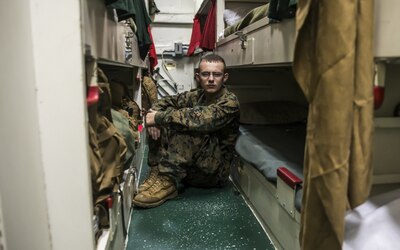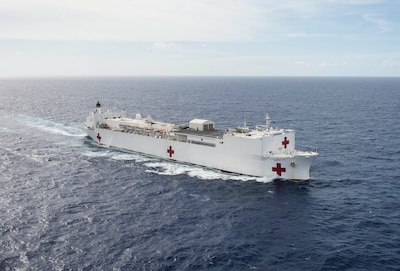By Christine June George C. Marshall European Center for
Security Studies
MUNICH, Feb. 22, 2018 — Wolfgang Ischinger, the chairman of
the Munich Security Conference, told members of the Loisach Group that the
German-American partnership is the “backbone” of the transatlantic alliance and
the conference, which was held here Feb. 16-18.
Each February, the Munich Security Conference brings
together more than 450 senior decision-makers from around the world to engage
in an intensive debate on current and future security challenges.
The Loisach Group is a collaboration between the Munich
Security Conference and the George C. Marshall European Center for Security
Studies that focuses on enhancing the security partnership between the U.S. and
Germany while promoting an enduring strategic dialogue between these essential
partners. The group met Feb. 19 after the Munich Security Conference wrapped
up.
The Marshall Center, based in Garmisch-Partenkirchen,
Germany, is a 25-year old German-American security partnership that has
produced generations of global security professionals schooled in American and
German security policies.
Key to Mutual Security
“Our [Loisach Group] guiding principle is the belief that
the German-U.S. partnership is the key relationship in America’s security
relationship with Europe beyond NATO,” said Keith W. Dayton, the Marshall
Center’s director. “This transatlantic relationship is at the foundation of our
group and is, we believe, the key to our mutual security.”
The group was formed last year to focus on enhancing the
security partnership between the United States and Germany with a view toward
establishing an enduring strategic dialogue platform.
The Loisach Group held a roundtable discussion engaging
ambassadors, former White House officials and senior German and American
military officers, academics and journalists to further strengthen the
strategic dialogue by discussing the lessons identified by this year’s Munich
Security Conference.
“I think it’s very important that we had this meeting
immediately after the Munich Security Conference because it gave us the chance
to reflect on what has been said, especially about how to foster the German-American
relationship,” said German Army Chief of Staff Lt. Gen. Jörg Vollmer. “What the
Loisach Group bought together today was good and open discussions, exchange of
thoughts, and gave all of us, I think, an idea on what we need to improve in
the upcoming weeks and months.”
‘Most Important Relationship in the World’
Vollmer was a part of the panel discussion on the state of
the German and U.S. strategic dialogue along with Frederick Benjamin
"Ben" Hodges III, former commanding general of U.S. Army Europe.
“I believe that the relationship between Germany and the
United States is the most important relationship in the world for the United
States,” Hodges said. “Germany is a partner that we need to jealously guard and
protect that relationship -- [it is] strategically important for us.”
Hodges added, “The Loisach Group is another line of effort
to help achieve that.”
Strategic Dialogue
This is the first time that Loisach Group held a side event
at the Munich Security Conference. The other panel discussion at this side
event was on aligning U.S. and German security policy. Sharing their thoughts
on this discussion were Karl-Heinz Kamp, president of the Federal Academy for
Security Policy in Berlin, and Dan Hamilton, executive director of the Center
of Transatlantic Relations at Johns Hopkins University in Washington.
“I couldn’t be more pleased with the level of engagement and
the level of interest,” said Andrew A. Michta, dean of the Marshall Center’s
College of International and Security Studies. “I think we have taken a very
significant step in building that network of people who are committed to the
German-American security strategic dialogue that Secretary of Defense [James
N.] Mattis mentioned when he was here.”
Mattis and German Defense Minister Ursula von der Leyen
visited the Marshall Center for the 70th anniversary of the Marshall Plan
commemoration ceremony in June last year.
“They inaugurated something they called a new ‘strategic
dialogue’ between Germany and the United States,” Dayton said. ‘In my view,
this was a recognition that the security bond between our two countries was
extremely important and could not be allowed to fade.”
Loisach Group’s Past, Future
The name of the group refers to the Loisach River in
Garmisch-Partenkirchen and the fact that the water from that river flows into
Munich. The first meeting of the Loisach Group was in May last year, and the
second meeting was a few months later in December.
Michta said the next meeting for the Loisach Group is
planned for this summer before the NATO Summit in Brussels.
“We will be able to generate some additional ideas and
hopefully, send it to our stakeholders in Berlin and Washington, D.C.,” he
said.









